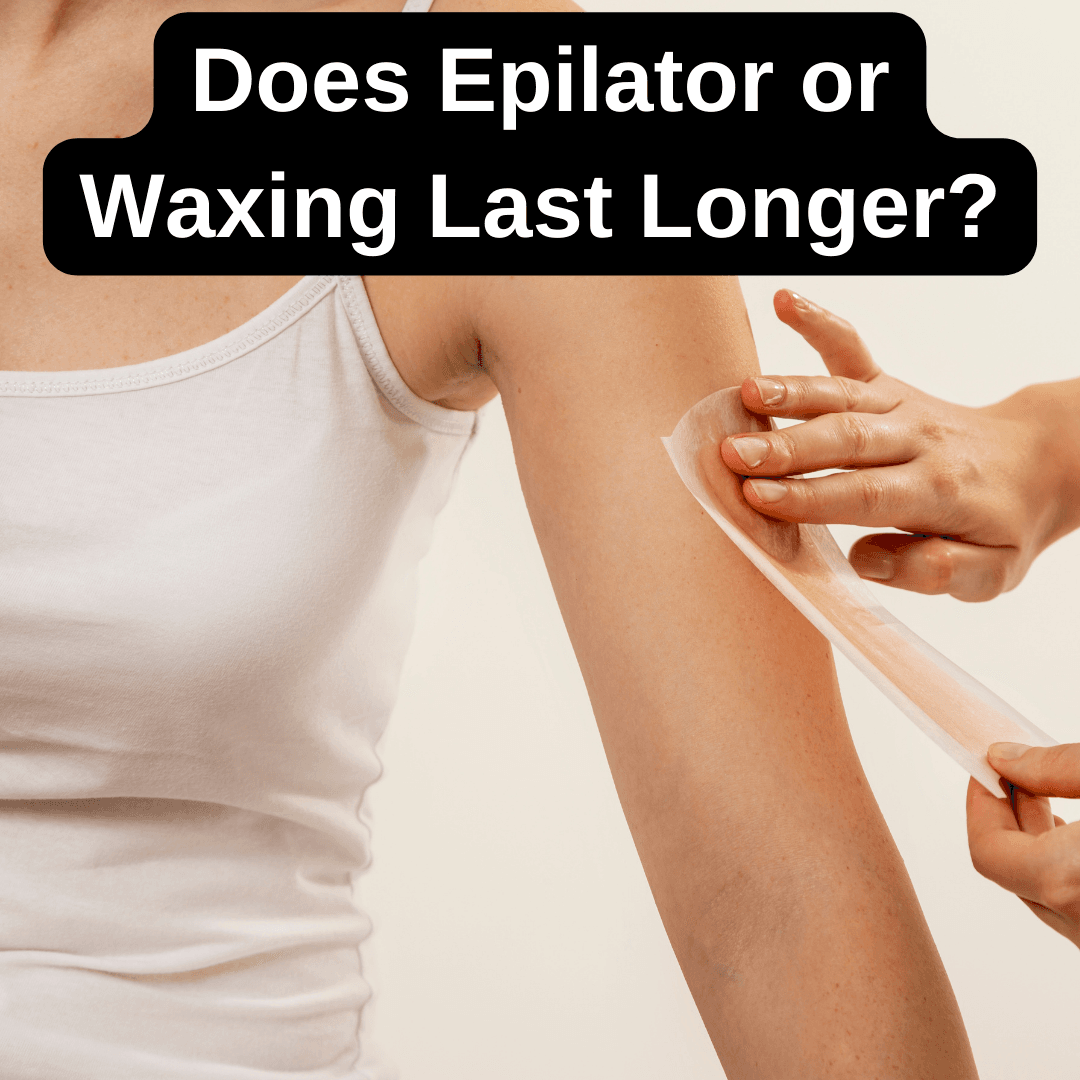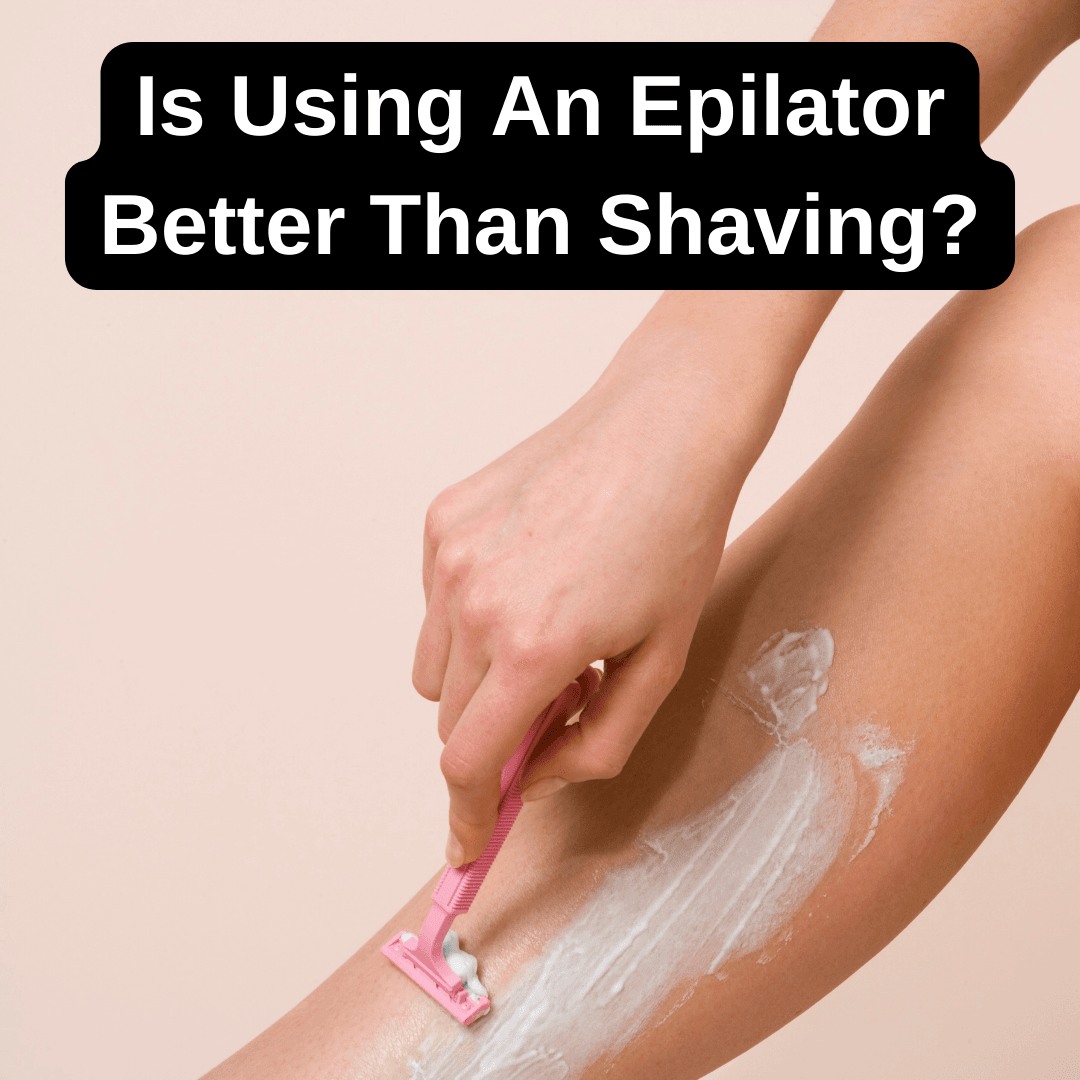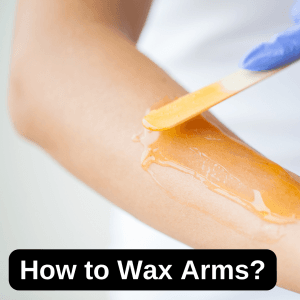When it comes to long-lasting hair removal, waxing and an epilator are two of the most effective methods available. Both techniques remove hair from the root, offering smoother skin for weeks. However, choosing between waxing and using an epilator depends on several factors, including pain tolerance, skin sensitivity, budget, and convenience.
Waxing is a traditional method that involves applying warm or cold wax to the skin, allowing it to adhere to the hair, and then quickly removing the wax to pull the hair out from the root. On the other hand, epilation uses an electronic device called an epilator, which plucks hairs directly from the root as you glide it along the skin. While both methods can provide similar results, they differ significantly in terms of cost, pain level, and suitability for different body areas.
In this guide, the key differences between waxing and an epilator will be explored, along with a comparison of their pros and cons, helping you determine which method is best suited for your skin type, pain tolerance, and hair removal goals.
Key Topics Covered in This Guide
- Pain levels associated with waxing and an epilator
- Longevity of results and hair regrowth differences
- Side effects and risks for each method
- Which method is best for sensitive skin
- Tips to reduce pain and prevent ingrown hairs
What’s the Difference Between Waxing and Epilator?
Quick Answer
Waxing involves applying warm or cold wax to the skin, which adheres to the hair and removes it from the root. On the other hand, epilation uses an electronic device called an epilator, which plucks hairs directly from the root. Both methods provide long-lasting hair removal but differ in pain level, cost, and suitability for different skin types.
Comparison Table: Waxing vs Epilators
| Feature | Waxing | Epilator |
| Pain Level | Moderate to Intense | Moderate to Intense |
| Best For | Arms, legs, bikini, face | Arms, legs, larger areas |
| Process | Wax hardens and strips off | Epilator plucks hairs |
| Side Effects | Redness, bumps, ingrowns | Tenderness, irritation |
| Longevity | 3 to 4 weeks | 3 to 4 weeks |
| Cost | $50–70 for salon, $20 DIY | $20–100 |
| Hair Length Needed | 1/4 to 1/2 inch | 1/8 to 1/4 inch |
| Ease of Use | Requires skill, messy | Easy, quick, less messy |
| Speed | Faster for larger areas | Faster for larger areas |
| Suitability for Thick Hair | Excellent | Effective but slower |
| Suitability for Fine Hair | Moderate | Excellent |
| Sensitive Skin Friendly | Hard wax is gentler | May cause irritation |
| Ingrown Hair Risk | Lower with proper care | Higher without exfoliation |
| Infection Risk | Higher if not sanitized | Low with proper cleaning |
| Environmental Impact | Produces disposable waste | Eco-friendly, reusable |
| Skin Sensitization Risk | Can cause long-term sensitivity | Less sensitization over time |
| Long-term Pain Reduction | Weakens follicles over time | Reduces pain with repeated use |
| Skin Smoothing Effect | Provides exfoliation | Only removes hair |
| Maintenance Required | Regular salon visits | Minimal, occasional cleaning |
| Convenience | Requires heating and setup | Ready to use anytime |
| Suitability for Face | Suitable for upper lip, chin | Suitable with facial attachment |
| Pubic Hair Suitability | Suitable with care | Possible but painful |
| Suitability for Sensitive Areas | Gentler with hard wax | May cause redness |
| Time Commitment | 30–60 min depending on area | 20–40 min depending on area |
| Effectiveness on Short Hair | Less effective | Very effective |
| Skin Discoloration Risk | Possible with frequent use | Minimal risk |
| Potential for Burns | Possible with hot wax | No risk |
| Hair Growth Over Time | Slower regrowth | Finer and sparser regrowth |
| Hygiene | Depends on cleanliness | High with proper cleaning |
| Risk of Strawberry Legs | Lower if properly prepped | Higher without exfoliation |
| Suitable for DIY | Moderate difficulty | Easy for beginners |
| Reusable Components | No, wax strips are disposable | Yes, long-term use possible |
| Average Time to Master | Few sessions | May take a few uses |
Waxing and epilators offer similar results lasting 3 to 4 weeks, but epilators may be more cost-effective in the long run while waxing suits sensitive areas better.
Waxing and epilation both involve hair removal from the root, but their effectiveness can vary depending on hair type and body area. If you’re curious about how waxing works on different body parts, especially arms, you can learn more from this detailed waxing guide.
Which is More Painful: Waxing or Epilator?
Quick Answer
Both waxing and epilator can be painful, but epilator may cause more discomfort for first-time users due to the plucking sensation.
Pain Level Comparison: Waxing vs Epilator
| Area | Waxing Pain Level | Epilator Pain Level |
| Arms & Legs | Moderate | Moderate |
| Bikini Area | High | Very High |
| Underarms | High | High |
| Face | Low to Moderate | Moderate |
| Pubic Hair | High | Very High |
| Sensitive Skin | Moderate to High | High |
Epilators may cause more discomfort, especially in sensitive areas like the bikini line, while waxing can be quick but equally intense.
Apply numbing cream 30 minutes before waxing or using an epilator to minimize discomfort, especially in sensitive areas.
Does Waxing or Epilator Cause More Ingrown Hairs?
Quick Answer
Epilators and waxing both can cause ingrown hairs, but exfoliating regularly can minimize the risk.
Ingrown Hair Prevention Tips
- Exfoliate 24 hours before and after.
- Moisturize the area after treatment.
- Avoid tight clothing after hair removal.
Use salicylic acid or glycolic acid after hair removal to prevent ingrown hairs.
Ingrown hairs can be an annoying side effect of both waxing and epilation. However, understanding how waxing may cause ingrown hairs and how to prevent them can help minimize discomfort.
To learn more about the causes, prevention, and treatment of ingrown hairs, refer to the detailed guide provided by the NHS on ingrown hairs.
How Often Should You Epilate or Wax?
Quick Answer
Both methods provide results that last 3 to 4 weeks, but epilators may allow shorter hair to be removed sooner.
Recommended Frequency
- Waxing: Every 4–6 weeks for optimal results.
- Epilator: Every 3–4 weeks, depending on hair growth speed.
For slower hair growth, epilate every 2 weeks to maintain smooth results and prevent ingrown hairs.
Regular waxing or epilation is essential to maintain smooth skin. Similarly, for maintaining healthy nails, knowing how often you should get a pedicure can prevent common issues like brittle nails and dryness.
If you’re also curious about the regrowth cycle of hair, you might want to check out how much hair grows in a month.
Does Epilator or Waxing Last Longer?

Quick Answer
Both epilator and waxing last around 3 to 4 weeks, but waxing may weaken hair follicles over time, slowing regrowth.
Longevity Comparison: Waxing vs Epilator
| Method | How Long Results Last | Effect on Hair Growth |
| Waxing | 3 to 4 weeks | Weakens hair follicles over time |
| Epilator | 3 to 4 weeks | Can lead to slower regrowth after regular use |
Consistency with either method can lead to finer hair over time.
For those seeking longer-lasting results, laser hair removal is often preferred over traditional methods. Curious about how long laser hair removal lasts? It might provide insights into achieving longer-lasting smoothness.
Is Waxing or Epilator Better for Sensitive Skin?
Quick Answer
Waxing may be more suitable for sensitive skin, as epilators can cause irritation on delicate areas.
Best Options for Sensitive Skin
- Waxing: Use hard wax, which is gentler on sensitive areas.
- Epilator: Use a lower speed setting and exfoliate before epilation.
Apply aloe vera gel after waxing or using an epilator to soothe the skin.
For individuals with highly sensitive skin, it’s essential to choose a gentler method. Those experiencing sensitivity might also consider alternatives such as laser waxing for long-lasting and less irritating results.
For sensitive skin, using gentler hair removal techniques is key. Check out Canadian Dermatology Association’s guide on safe hair removal for sensitive skin.
Can You Use an Epilator for Pubic Hair?
Quick Answer
Yes, but it may be painful, so it’s best to trim the hair and use a gentle epilator head for sensitive areas.
Pro Tips for Epilator Pubic Hair
- Trim hair to 1/8 inch before epilator.
- Use a bikini trimmer attachment if available.
- Exfoliate the area before and after using an epilator.
Warning
Avoid using epilators on extremely sensitive skin without preparation.
Using an epilator for pubic hair is possible but often painful. For those seeking a more permanent solution for sensitive areas, Brazilian laser hair removal might be a better option.
Does an Epilator Remove Hair Permanently?
Quick Answer
No, epilators do not remove hair permanently, but they can slow down hair growth over time.
Alternative for Permanent Results
- Laser Hair Removal or Electrolysis offers permanent hair reduction. For a deeper understanding of how electrolysis works and how many sessions are required, explore this detailed guide on electrolysis.
Regular use of an epilator may lead to finer regrowth over time.
What Are the Side Effects and Risks of Waxing and Epilation?
Quick Answer
Both methods can cause temporary irritation, redness, and ingrown hairs.
Common Side Effects
- Waxing: Redness, irritation, rashes, and allergic reactions, especially for sensitive skin or facial waxing.
- Epilator: Tenderness, bumps, and ingrown hairs, particularly in the bikini area and underarms.
Avoid sun exposure and apply soothing lotions after hair removal.
Although both methods offer smooth results, improper aftercare can lead to irritation or ingrown hairs. To avoid such issues, it’s important to know when to exfoliate after laser hair removal to prevent complications.
Ease of Use: Which Is More Convenient?
Quick Answer
Waxing requires more preparation and skill, while using an epilator is more straightforward and can be done quickly at home.

Detailed Comparison
- Waxing: Involves heating the wax, applying it correctly, and removing it with precision. If done incorrectly, it can leave patches of hair or cause irritation.
- Epilator: Involves using an electronic device that plucks hairs directly from the root. While epilators are easier to use, beginners may take some time to master the technique and manage pain.
Waxing may be a better option if you are experienced and prefer professional results, while epilation is ideal for those seeking a cost-effective and convenient at-home solution.
Waxing often requires skill and practice, while epilators are easier for at-home use. If you prefer salon-quality results but want to minimize risks, learning how to wax arms correctly can be helpful.
Time Required: Which One Is Faster?
Quick Answer
Epilators are generally quicker for larger areas (like legs and arms), while waxing can be faster for smaller, sensitive areas.
Detailed Comparison
- Epilator: Works well for large areas such as the legs, arms, and underarms. It may take longer for smaller, sensitive areas due to the need for precision.
- Waxing: Removes hair in larger patches, making it faster for small and sensitive areas but may take more time for larger areas due to repeated applications.
For larger areas, epilation may save time, while waxing provides a quicker solution for small and sensitive areas.
Hair Type Suitability: Which Works Best for Thick or Fine Hair?
Quick Answer
Both methods can handle thick and fine hair, but waxing may be more effective for coarse hair, while epilators excel at capturing shorter, finer hairs.
Detailed Comparison
- Waxing: Particularly effective for removing thick and coarse hair because the wax adheres to the hair shaft and pulls it out cleanly.
- Epilators: Better suited for fine and short hairs that may be missed by waxing. Epilation works well for hair as short as 1/8 inch, making it a suitable choice for maintaining smooth skin between waxing sessions.
Waxing is ideal for thicker hair, while epilation is best for finer, shorter hairs that may be missed during waxing.
Suitability for Different Skin Types: Which Is Gentler?
Quick Answer
Waxing may be gentler for sensitive skin, while epilation avoids the risk of burns caused by heated wax.
Detailed Comparison
- Waxing: Especially hard wax, is often recommended for sensitive areas because it adheres to the hair and not the skin, reducing irritation. However, repeated waxing can lead to skin thinning and increased sensitivity over time.
- Epilators: Do not involve heat and are generally safe for all skin types, although they may cause redness or irritation, especially for first-time users.
Waxing is a better choice for highly sensitive skin, while epilation is ideal for those who want to avoid heat-induced irritation.
Hygiene and Infection Risk: Which Is Safer?
Quick Answer
Epilation can be more hygienic if properly cleaned and maintained, reducing the risk of infections.
Detailed Comparison
- Waxing: Can introduce bacteria if the wax is reused or if the strips and applicators are not properly sanitized. This increases the risk of infections, especially in sensitive areas.
- Epilator: Requires regular cleaning and sanitation after each use. If properly cleaned, epilators are safer and reduce the risk of bacterial contamination.
Epilation is generally more hygienic than waxing, but only if the device is cleaned and maintained properly.
To minimize the risk of infections during waxing procedures, it’s essential to follow strict hygiene protocols. According to the NSW Health Department, ensuring clean equipment and proper sanitation reduces the risk of bacterial contamination during waxing.
Link: https://www.health.nsw.gov.au/environment/factsheets/Pages/waxing.aspx
The Australian Department of Education and Training provides detailed guidelines on performing waxing and other beauty treatments correctly, ensuring the highest standards of hygiene and safety.”
Link: https://training.gov.au/TrainingComponentFiles/SHB/SHB_R1.0.pdf
Environmental Impact: Which Is More Eco-Friendly?
Quick Answer
Epilation is more environmentally friendly than waxing in terms of long-term use, but electronic waste and battery use must be considered.
Detailed Comparison
- Waxing: Generates waste from disposable strips, wax residue, and applicators. Even DIY wax kits create a significant amount of waste over time.
- Epilator: A one-time investment that can last for years with minimal maintenance, reducing the environmental footprint. However, electronic devices and batteries used in epilators contribute to electronic waste.
Epilation is a more sustainable option for individuals looking to reduce their environmental impact, but electronic waste and battery disposal should not be overlooked.
Pain Over Time: Does the Pain Decrease with Repeated Use?
Quick Answer
Both methods become less painful over time as the hair becomes finer and the follicles weaken, but waxing tends to weaken follicles faster.
Detailed Comparison
- Waxing: Regular waxing weakens hair follicles faster over time, leading to thinner and less painful regrowth.
- Epilator: Consistent use of an epilator results in finer hair, but the follicle weakening process may take longer compared to waxing.
Both waxing and epilation reduce pain over time, but waxing may produce faster results in weakening follicles.
While repeated epilation or waxing may reduce pain over time, those looking for a pain-free solution may consider intense pulsed light (IPL) treatment, which offers less discomfort with longer-lasting results.
Skin Smoothing Effect: Which Leaves Skin Smoother?
Quick Answer
Waxing provides an additional exfoliation effect that leaves the skin smoother, while epilation focuses primarily on hair removal.
Detailed Comparison
- Waxing: Removes hair and exfoliates dead skin cells, leaving the skin feeling smooth and soft.
- Epilator: Removes hair from the root but does not exfoliate dead skin cells, which may result in slightly rougher skin compared to waxing.
Waxing leaves the skin smoother due to its exfoliating properties, while epilation is ideal for quick hair removal without additional skin benefits.
Waxing tends to exfoliate the skin, providing a smoother finish. Additionally, using rose water after waxing can further soothe and hydrate the skin, preventing irritation.
Cost Comparison: Which Is More Budget-Friendly?
Quick Answer
Epilation is more cost-effective in the long run, but battery replacements and device maintenance should be factored in.
Detailed Comparison
- Waxing: Regular waxing, whether done at home or in a salon, requires ongoing costs. Salon visits can range from $50 to $70 per session, and at-home kits typically cost around $20 to $30. Over time, these costs can add up significantly.
- Epilator: A high-quality epilator costs between $20 and $100, making it a one-time investment. However, potential battery replacements and device maintenance should also be considered.
Epilation is a more economical solution, especially for individuals looking for a long-term hair removal option, but battery and maintenance costs should be taken into account.
Risk of Skin Sensitization: Which Causes Less Sensitization Over Time?
Quick Answer
Epilation may cause less skin sensitization over time, but both methods can increase sensitivity depending on skin type and frequency of use.
Detailed Comparison
- Waxing: Pulls the hair out with force, which may cause skin sensitization and irritation, especially in delicate areas. Long-term use can cause skin thinning in sensitive areas.
- Epilator: Initially, epilation can be more irritating and cause redness or bumps. However, over time, as the hair weakens, it becomes less painful and reduces sensitization.
Both waxing and epilation can lead to increased skin sensitivity, but epilation may be a safer long-term option for maintaining smooth skin without increasing sensitivity.
Epilators may reduce skin sensitization over time, but using appropriate skincare products can help prevent irritation. Understanding why exfoliating after laser hair removal is essential can be a game-changer for maintaining skin health.
Maintenance and Longevity: Which Requires Less Maintenance?
Quick Answer
Epilators require less frequent maintenance but may need occasional part replacements and cleaning to ensure long-term performance.
Detailed Comparison
- Waxing: Requires regular sessions every 3 to 4 weeks, along with the purchase of wax strips, wax warmers, and applicators. Waxing products are disposable and must be repurchased regularly.
- Epilator: Only requires occasional cleaning and part replacements. However, epilator heads and attachments may wear out over time, and rechargeable batteries may need replacement.
Epilation requires less ongoing maintenance, but occasional part replacements and battery care should not be overlooked.
FAQ Section: Epilator vs Waxing – Most Asked Questions
Is it better to epilate or shave?
Quick Answer:
Epilator is better for long-lasting results as it removes hair from the root, while shaving only cuts hair at the surface, leading to faster regrowth.
Detailed Explanation:
- Epilator: Provides results that last 3 to 4 weeks by removing hair from the root. However, some finer hairs may be missed, requiring touch-ups.
- Shaving: Results last only 1 to 3 days as it cuts hair at skin level, making regrowth feel coarser.

Epilator weakens hair over time, making regrowth finer, while shaving can cause thicker, blunt-edged regrowth.
Is it better to epilate wet or dry?
Quick Answer:
Wet epilation is less painful and better suited for sensitive skin, while dry epilation provides a more thorough hair removal experience.
Detailed Explanation:
- Wet Epilation: Using an epilator in the shower softens the hair and opens up pores, reducing pain and irritation.
- Dry Epilation: Provides a closer and more effective result but may be more painful, especially for first-time users.
If you are new to epilation, start with wet epilation to minimize discomfort.
Should you epilate first or shower?
Quick Answer:
It is better to shower first before epilation, as warm water opens up pores and softens hair, making the process less painful. However, ensure the skin is completely dry before epilation.
Detailed Explanation:
- Warm Water Effect: Softens the hair and relaxes the skin, allowing the epilator to glide more smoothly.
- Dry Skin Requirement: Epilation on wet or damp skin may be less effective, as the epilator may struggle to grip wet hair.
Exfoliate before showering to prevent ingrown hairs and achieve smoother results.
Do I epilate against hair growth?
Quick Answer:
Yes, you should epilate against the direction of hair growth for the most effective hair removal.
Detailed Explanation:
- Against Hair Growth: Moving the epilator against the grain allows the tweezers to grip and pluck the hair more efficiently.
- With Hair Growth: If you move it in the same direction as hair growth, the epilator may miss shorter hairs and leave uneven results.
Hold the skin taut while epilating to reduce pain and ensure smoother results.
Is it OK to epilate pubes?
Quick Answer:
Yes, it is safe to epilate pubic hair, but caution should be taken due to the sensitivity of the area.
Detailed Explanation:
- Pubic Area Sensitivity: Epilating pubic hair can lead to irritation, ingrown hairs, and discomfort if not done properly.
- Use a specialized epilator head for sensitive areas and exfoliate beforehand to minimize ingrown hairs.
Can you do a Brazilian with an epilator?
Quick Answer:
Yes, you can perform a Brazilian with an epilator, but it can be very painful and requires extra care.
Detailed Explanation:
- Brazilian Epilation: Removes hair from the entire pubic region, including the front, sides, and back.
- Tips for Brazilian Epilation:
- Use a sensitive area cap to minimize pain.
- Apply a numbing cream before epilation.
- Stretch the skin taut to reduce discomfort and ensure smooth results.
Can I epilate my face?
Quick Answer:
Yes, you can epilate your face, but it’s best to use a facial epilator or a sensitive attachment to avoid irritation.
Detailed Explanation:
- Facial Sensitivity: Facial skin is delicate and prone to irritation, so using a lower speed setting is recommended.
- Areas Suitable for Epilation:
- Upper lip
- Chin
- Jawline
- Sideburns
- Caution: Avoid epilating around the eyes or overly sensitive areas.
For facial hair removal, it’s important to consider the risks involved. Learn more about whether it’s bad to wax your face and the potential side effects.
What part of the body hurts the most to wax?
Quick Answer:
The most painful areas to wax are the bikini area, underarms, and upper lip due to the sensitivity of the skin. However, pain tolerance may vary from person to person.
Detailed Explanation:
- Bikini Area: Thick hair and sensitive skin make this area prone to pain and irritation. Proper technique and hard wax can help reduce discomfort.
- Underarms: Skin in this area is thin, which increases sensitivity. The pain can be intense, especially for first-time waxers.
- Upper Lip: Delicate facial skin can be sensitive to waxing, causing discomfort. Threading or a gentle wax can be a better alternative for sensitive facial skin.
- Other Painful Areas: Some people may experience higher pain on legs or thighs depending on skin sensitivity.
Does waxing last longer than epilator?
Quick Answer:
Both waxing and epilator provide results that last around 3 to 4 weeks, but epilator may weaken hair follicles faster over time with consistent use.
Detailed Explanation:
- Waxing: Removes hair from the root and may reduce regrowth density after multiple sessions. However, regrowth may still occur at the same rate if waxing is not performed regularly.
- Epilator: Also removes hair from the root and gradually weakens hair follicles with consistent use, potentially leading to finer and slower regrowth.
Will epilator eventually stop hair growth?
Quick Answer:
Epilator can slow down hair growth over time but does not stop it permanently.
Detailed Explanation:
- Regular Epilation: Weakens hair follicles over time, causing finer and slower regrowth. However, it does not provide permanent results.
- Consistent epilation over several months can lead to less noticeable hair growth, but for permanent hair removal, laser or electrolysis is recommended.
Does waxing stop hair growth permanently?
Quick Answer:
No, waxing does not stop hair growth permanently, but it can reduce hair thickness and slow regrowth over time.
Detailed Explanation:
- Waxing Effect: Damages the hair follicle over time, which may result in thinner and slower regrowth. However, this process is not permanent.
- Alternative Permanent Methods: For permanent hair reduction, laser hair removal or electrolysis is required.
Will an epilator remove hair permanently?
Quick Answer:
No, an epilator cannot permanently remove hair, but it can significantly slow down regrowth with consistent use.
Detailed Explanation:
- Epilator Mechanism: Epilators pull hair from the root, weakening the follicle over time, but they do not destroy the hair follicle.
- For permanent hair reduction, consider combining epilation with laser treatments for better results.
How to permanently remove body hair?
Quick Answer:
The only permanent methods to remove body hair are laser hair removal and electrolysis.
Detailed Explanation:
- Laser Hair Removal: Reduces hair growth by damaging the follicle with laser light. It typically requires multiple sessions for long-term results.
- Electrolysis: Permanently destroys hair follicles using an electric current, making it the most effective method for permanent hair removal.
Why does my hair grow so fast after epilator?
Quick Answer:
Hair may appear to grow faster after epilator because some hairs grow at different stages of the hair growth cycle.
Detailed Explanation:
- Initial Regrowth: May seem faster as hairs that were not removed during the previous session grow back.
- Over Time: Consistent epilation weakens hair follicles, leading to slower and finer regrowth.
Does an epilator increase hair growth?
Quick Answer:
No, using an epilator does not increase hair growth. In fact, it weakens hair follicles over time, leading to finer and slower regrowth.
Detailed Explanation:
- Epilator Impact: Epilation removes hair from the root, which reduces hair thickness and density with regular use.
- Myth Clarification: Some people perceive faster regrowth after epilation, but this is due to the uneven growth cycle of hair.
Does hair become thinner after epilator?
Quick Answer:
Yes, hair becomes thinner and less dense after repeated epilation sessions.
Detailed Explanation:
- Regular Epilation: Weakens hair follicles over time, causing regrowth to become finer and sparser.
- Long-Term Effects: Consistent use may result in a noticeable reduction in hair thickness and density.
What are the long-term effects of using an epilator?
Quick Answer:
The long-term effects of using an epilator include finer regrowth, slower hair growth, and reduced density.
Detailed Explanation:
- Reduced Regrowth: Regular use weakens follicles, leading to slower regrowth.
- Thinner Hair: Hair becomes finer and less noticeable over time.
Is epilator bad for skin?
Quick Answer:
No, epilator is not inherently bad for the skin, but improper technique can cause irritation and ingrown hairs.
Detailed Explanation:
- Potential Side Effects: Redness, irritation, and ingrown hairs may occur, especially for sensitive skin.
- Exfoliate before and after using an epilator to prevent skin irritation and reduce the risk of ingrown hairs.
What are the disadvantages of epilation hair removal?
Quick Answer:
The main disadvantages of epilation are pain, ingrown hairs, and skin irritation, especially for sensitive skin.
Detailed Explanation:
- Pain Factor: Epilator can be uncomfortable, especially for first-time users.
- Ingrown Hairs: Can occur if the skin is not properly exfoliated before epilation.
What are the disadvantages of using an epilator on your face?
Quick Answer:
Using an epilator on the face can cause redness, irritation, and ingrown hairs if not done carefully.
Detailed Explanation:
- Facial Sensitivity: Facial skin is delicate, and epilator without proper preparation can lead to irritation.
- Use a facial epilator with a sensitive-area cap to minimize discomfort.
Do epilators cause more ingrown hairs than waxing?
Quick Answer:
Epilators and waxing can both cause ingrown hairs, but epilators may lead to more ingrown hairs if the skin is not properly exfoliated.
Detailed Explanation:
- Why It Happens: Ingrown hairs occur when hair grows back into the skin, often due to improper exfoliation.
- Prevention Tips:
- Exfoliate 24 hours before epilator or waxing.
- Moisturize the skin to keep it hydrated and prevent clogged pores.
Is waxing or epilator better for ingrown hairs?
Quick Answer:
Both waxing and epilators can cause ingrown hairs if not performed correctly, but waxing is generally less likely to cause ingrown hairs.
Detailed Explanation:
- Waxing: Removes hair from the root and exfoliates the skin, reducing the chances of ingrown hairs. Proper technique and aftercare can minimize this risk.
Epilators: Can leave short hairs behind that may curl and grow inward, leading to ingrown hairs. Regular exfoliation helps prevent this.
Does epilator cause strawberry legs?
Quick Answer:
Strawberry legs can occur after epilation, but this condition is not exclusive to epilators.
Detailed Explanation:
- Why It Happens: Open pores trap dirt, oil, and bacteria, leading to the appearance of strawberry legs. This condition can also occur after shaving, waxing, or epilation.
- Exfoliate and moisturize before and after epilation to prevent strawberry legs.
How to treat strawberry legs after epilator?
Quick Answer:
Use gentle exfoliation, moisturizing, and hydrating products to treat strawberry legs after epilation.
Detailed Explanation:
- Treatment Tips:
- Exfoliate with a mild scrub to unclog pores.
- Apply aloe vera or glycolic acid to reduce inflammation.
- Moisturize daily to maintain smooth skin and prevent dryness.
How to prevent strawberry skin after epilator?
Quick Answer:
Exfoliate regularly, moisturize the skin, and use an epilator on clean skin to prevent strawberry skin.
Detailed Explanation:
- Prevention Tips:
- Exfoliate with a gentle scrub 24 hours before epilating.
- Use warm water to open pores before epilation.
- Apply a soothing lotion or aloe vera to reduce irritation.
Is waxing bad for strawberry legs?
Quick Answer:
No, waxing is not inherently bad for strawberry legs, but improper waxing can worsen the condition.
Detailed Explanation:
- Waxing Impact: Waxing can help exfoliate the skin, but if the skin is not properly prepped, it can lead to irritation and worsen strawberry legs.
Does epilation cause skin darkening?
Quick Answer:
Epilation does not directly cause skin darkening, but repeated irritation can lead to hyperpigmentation over time.
Detailed Explanation:
- Prevention Tips:
- Avoid excessive friction and irritation.
- Apply sunscreen to protect against UV-induced pigmentation.
- Use soothing lotions to calm the skin after epilation.
Does epilator darken skin?
Quick Answer:
An epilator does not darken skin, but frequent use on sensitive areas may cause temporary irritation, which can lead to dark spots.
Detailed Explanation: Moisturize after epilation to prevent skin dryness and irritation. Applying aloe vera or a calming lotion can help reduce any potential redness or discomfort.
Does waxing darken armpits?
Quick Answer:
No, waxing does not darken armpits, but repeated waxing without proper aftercare may cause skin irritation and hyperpigmentation.
Detailed Explanation:
- Prevention Tips:
- Use a gentle exfoliator before waxing.
- Apply aloe vera or a soothing lotion after waxing to prevent irritation and reduce the risk of hyperpigmentation.
How to close pores after epilator?
Quick Answer:
Apply cold water, witch hazel, or aloe vera gel to close pores and reduce redness after using an epilator.
Detailed Explanation:
- Effective Pore-Closing Techniques:
- Rinse with cold water immediately after epilation.
- Apply witch hazel or a toner to tighten pores.
Use aloe vera gel to soothe the skin and reduce inflammation.
How to get smooth armpits naturally?
Quick Answer:
Exfoliate regularly, moisturize, and remove hair gently to achieve smooth armpits naturally.
Detailed Explanation:
- Natural Tips:
- Use a sugar scrub to exfoliate dead skin cells and prevent ingrown hairs.
- Apply coconut oil or aloe vera to keep the skin hydrated.
- Avoid harsh deodorants that can irritate the skin.
How do models have smooth legs?
Quick Answer:
Models maintain smooth legs by using a combination of laser hair removal, waxing, epilation, moisturizing, and regular exfoliation.
Detailed Explanation:
- Pro Tips for Smooth Legs:
- Exfoliate 2–3 times a week to prevent dead skin buildup.
- Moisturize daily to maintain hydrated, smooth skin.
- Consider long-term solutions such as laser hair removal for permanent results.
How to make epilator hurt less?
Quick Answer:
To reduce pain while using an epilator, exfoliate beforehand, use a numbing cream, and epilate after a warm shower.
Detailed Explanation:
- Pain Reduction Tips:
- Numb the area with lidocaine cream 30 minutes before using an epilator.
- Stretch the skin taut to reduce discomfort and ensure smoother results.
- Start with a lower speed setting if using an epilator for the first time.
What moisturizer is good after epilator?
Quick Answer:
Aloe vera gel, fragrance-free lotions, and anti-inflammatory creams are best for moisturizing after epilation.
Detailed Explanation:
- Recommended Options:
- Aloe vera for soothing and cooling irritated skin.
- Hyaluronic acid to lock in moisture and prevent dryness.
- Pantenol (Provitamin B5) for reducing inflammation and promoting skin healing.
- Fragrance-free lotions to prevent irritation and allergic reactions.
What not to do after epilator?
Quick Answer:
Avoid using harsh soaps, tight clothing, and direct sunlight immediately after epilation.
Detailed Explanation:
- Avoid:
- Swimming or excessive sweating for 24 hours.
- Sun exposure that may cause irritation and increase pigmentation.
- Using harsh exfoliators or scrubs immediately after epilation.
- Tight clothing that can trap sweat and bacteria, leading to irritation.
- Perfumed lotions, deodorants, or alcohol-based products that may further irritate the skin.
Avoid using retinoids or chemical exfoliants to prevent additional irritation.
Why am I prickly after epilator?
Quick Answer:
Prickliness after epilation occurs when short hairs are left behind or if the hair regrowth cycle is uneven.
Detailed Explanation:
- Why It Happens:
- Some hairs may be too short for the epilator to grip effectively.
- Uneven hair regrowth due to varying hair growth cycles.
- Skin irritation caused by friction or improper epilation technique.
- Clogged follicles may also contribute to the sensation of prickly skin.
Exfoliate regularly and use a finer epilator head to catch shorter hairs. Stretch the skin taut while epilating for smoother results.
Why do my legs still look hairy after I shave?
Quick Answer:
Your legs may still look hairy after shaving due to dark hair follicles beneath the skin’s surface.
Detailed Explanation:
- Why It Happens:
- Dark Hair Follicles: Even after shaving, dark hair follicles can be visible through the skin, giving the appearance of stubble.
- Ingrown Hairs: Hair may curl back into the skin, causing a bumpy and rough texture.
- Clogged Pores: Dead skin cells, oil, and debris can clog the pores, giving the illusion of hair.
Exfoliate before shaving to remove dead skin and lift hair for a closer, smoother shave.
Do dermatologists recommend epilators?
Quick Answer:
Yes, dermatologists may recommend epilators for long-lasting hair removal, but they advise proper exfoliation to prevent ingrown hairs.
Detailed Explanation:
- Dermatologists Recommend Epilators For:
- Reducing hair density over time and weakening hair follicles.
- Achieving smoother skin with less frequent maintenance.
- Individuals with light to moderate hair growth who prefer a longer-lasting alternative to shaving.
- Caution for Sensitive Skin:
- Dermatologists advise using a lower speed setting on sensitive areas to reduce irritation.
- Regular exfoliation and moisturizing after epilation can help prevent ingrown hairs and maintain smooth skin.
If you have sensitive or acne-prone skin, always test the epilator on a small patch of skin before using it on larger areas.
Epilator vs. Waxing: Which One Should You Choose for Long-Lasting Smoothness?
Choosing between waxing and an epilator can be challenging, as both methods offer long-lasting results by removing hair from the root. However, the best option depends on factors like pain tolerance, skin sensitivity, budget, and desired convenience. While waxing is often preferred for sensitive areas like the bikini line or face, epilators are ideal for large areas such as legs and arms where speed and cost-effectiveness matter.
Which Method Is Best for You?
- Go for Waxing If:
- You prefer smoother results with fewer passes.
- You are comfortable with regular salon visits or have experience with DIY waxing at home.
- You have sensitive skin and need a gentler method for delicate areas.
- Choose Epilation If:
- You want a budget-friendly, long-term solution that weakens hair follicles over time.
- You prefer a low-maintenance, at-home hair removal method that is ready for use anytime.
- You are looking for a more eco-friendly option with minimal waste.
For best results, exfoliate 24 hours before either method to prevent ingrown hairs and ensure smoother skin. Additionally, apply aloe vera or a soothing lotion post-treatment to calm any irritation and maintain silky, hair-free skin.
If precision and gentleness in sensitive areas are your priority, waxing is the better choice. However, if convenience, long-term cost savings, and less maintenance appeal to you, epilation is the superior option for smooth, hair-free skin.

Board-Certified Aesthetic Specialist & Certified Laser Technician
She is a board-certified aesthetic specialist with 14+ years of experience in laser hair removal, skincare, and full-spectrum beauty services. Holding academic training in beauty sciences and advanced certifications, she blends medical-grade knowledge with personalized care. At Epilation World, her mission is to empower readers with clear, ethical, and research-backed insights that support confident personal care decisions.





